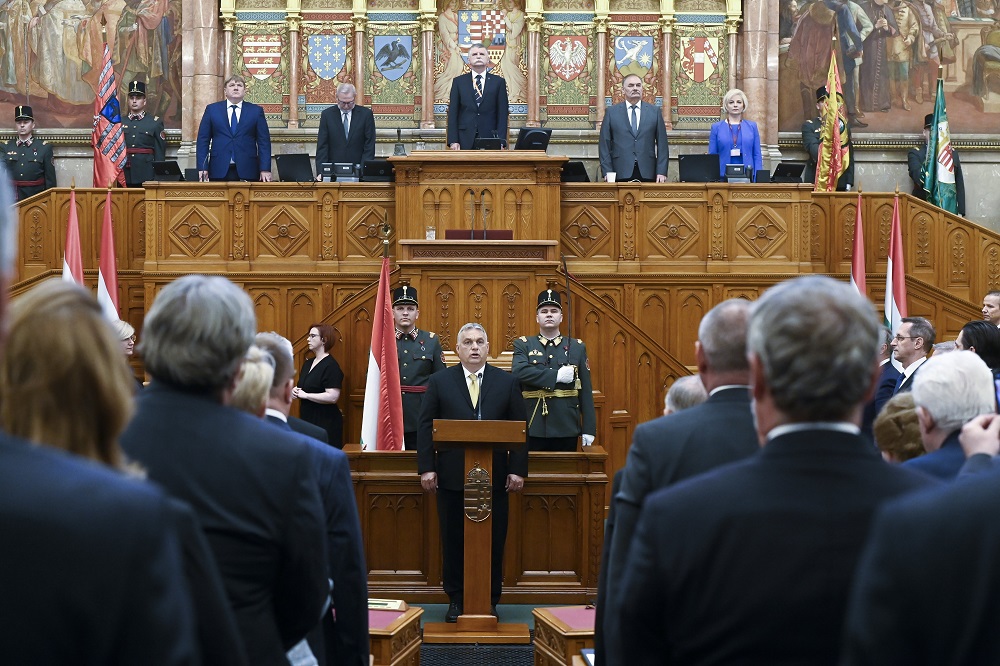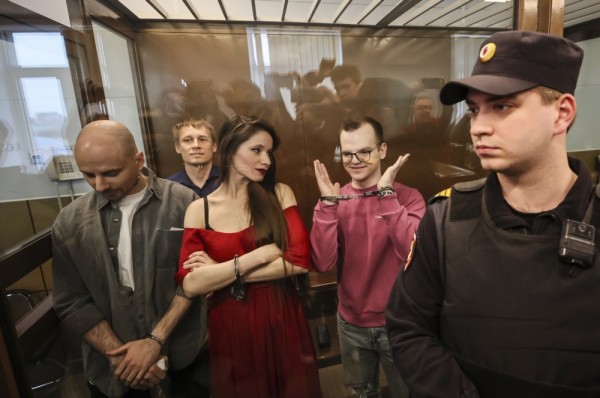This piece is published in collaboration with Telex.hu as part of a content series on threats to independent media in Central Europe. Read more
Find the original video on Telex.hu
All the makings of democracy seem to be in place in Hungary, but these are all simply the props of Hungarian Prime Minister Viktor Orbán’s illiberal theatre. In the video below, we show the gradual shrinking of the public sphere in Hungary, as well as how the space where the critical press can manoeuvre has shrunk.
One of Viktor Orbán’s most important political principles is that to be successful in politics and to gain power, one needs disciplined communication and loyal media.
The leader of Fidesz has been working on this since the mid-1990s, both in opposition and in government. According to the prime minister’s approach, in addition to a press loyal to the party, it is also crucial that the leeway of media critical of the authorities is as narrow as possible, because even a single negative statement could cause a serious problem.
Since his return to power in 2010, Orbán has introduced a number of measures to help achieve these goals.
In 2010 the press still had considerable freedom to work within the parliament building. But when Speaker of the House, László Kövér modified the bylaws of the House, he significantly reduced the chance of the press to access politicians inside parliament. Today, the press are only allowed in a small marked-off area, the size of a bus stop, where very few government politicians are willing to stop to answer questions.
Since the office of Viktor Orbán was moved from the Parliament to the Castle District in 2019, cabinet meetings have been held there instead. Unlike in many other Western countries, no advance information is released by the cabinet, nor is it officially known when the most important meetings about running the country are to be held.
Orbán’s office is accessed via a public area called Színház Street, where – for a while – it was possible to briefly stop ministers and state secretaries. The situation changed at the end of 2021, when the street was closed for construction, leaving only office employees with access to the entrance. Despite repeated statements from the Prime Minister’s Office, the construction does not prevent access to the Prime Minister’s Office, and it is clear that the only reason for fencing in the building has been to prevent the press from accessing politicians.
All of this is significant because since 2010, the Orbán governments have been working on transforming the public sphere in Hungary, with the goal being to reduce the space available to voices, information and questions critical of the authorities.
To this end, the media law was amended, a new national authority was set up, business circles loyal to the government bought up the most important players in the press market, and a Fidesz media holding company, KESMA, was created. KESMA consists of nearly 500 products, which broadcast the messages of the government on every single platform. In many cases, these pro-government publications are kept alive by state advertising which is financed by public funds.
Thanks to Orbán’s media policy, a significant number of the electorate only have access to the government’s messages, and the voices critical of the government don’t reach them. The leading politicians of the governing parties only speak to the independent press on rare occasions. At the same time, the various ministries and official state institutions rarely give substantive answers to the enquiries of independent media.
It is due to all of the above that analysts, journalists and politicians have often criticized Orbán’s media policy as undemocratic.
Watch the video below (with English subtitles) to see more details and get an insight into the obstacles facing Hungary’s remaining independent media.
Please accept cookies to access this content
This piece is part of a content series on threats to independent media in Central Europe in collaboration with leading independent media in the region. Any viewpoints expressed in these articles do not necessarily represent the views of IPI. Read more.



